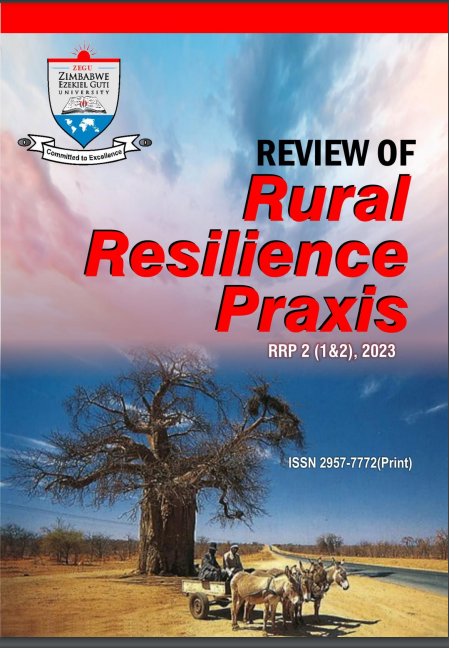Health as a rural development matter How safe and secure are rural populations in Zimbabwe since 2000
DOI:
https://doi.org/10.71458/t5jdqe78Keywords:
Zimbabwe, post 2000, rural population, secure, safe, rural development, HealthAbstract
This study provides a comprehensive overview of the intricate developmental nexus between health and rural development in Zimbabwe, specifically focusing on the safety and security of rural populations from the year 2000 to the present. The primary objective of this essay is to shed light on the challenges and opportunities that rural communities in Zimbabwe encounter concerning their health and wellbeing within the broader context of development initiatives. To achieve this, the study adopts a mixed-methods approach, integrating quantitative analysis of health indicators with qualitative investigations into the socio-economic factors influencing rural health. Quantitative data for the study is sourced from the Zimbabwe Demographic and Health Survey, emphasising key health metrics such as contraceptive use, teenage pregnancies, sexual and gender-based violence, HIV&AIDS prevalence, and HIV testing. In tandem with this quantitative approach, qualitative data is collected through interviews and focus group discussions conducted in carefully selected rural communities. The combined findings of this research aim to contribute significantly to a nuanced and holistic understanding of health as a pivotal component of rural development in Zimbabwe. In rural areas, the levels of contraceptive use is slightly lower, at 63%, compared to urban areas, which stands at 71%. The level of HIV testing in rural areas is slightly lower, 35%, compared to the higher rate observed in urban areas, which stands at 38%. It is important to note a significant gender-based disparity, with higher HIV prevalence among women at 17% compared to men at 11%. In rural settings, the prevalence of sexual violence is higher, at 14%, compared to 13% in rural areas. The prevalence of physical violence is higher, at 35%, compared to the slightly lower rate observed in urban areas, which stands at 34%. The prevalence of malnutrition in children is higher in rural areas, at 29%, compared to 22% in urban areas, with the level of vaccination slightly lower in rural areas, at 75%, compared to the higher rate observed in urban areas, which stands at 81%. This research's outcomes are expected to be valuable for policymakers, healthcare practitioners, and development agencies, providing evidence-based insights for formulating targeted interventions. The study recommends formulation of effective strategies that can improve the safety and security of rural communities in Zimbabwe.




